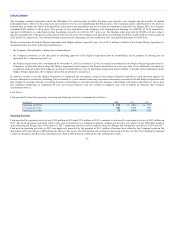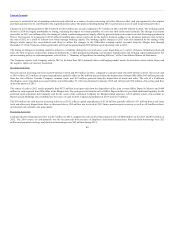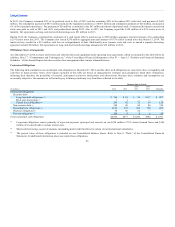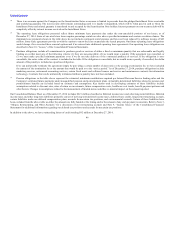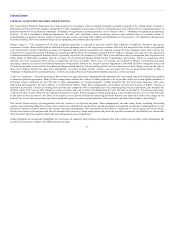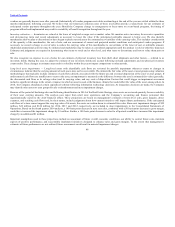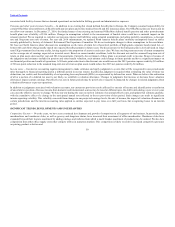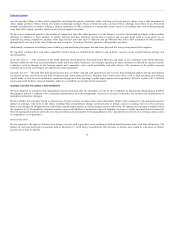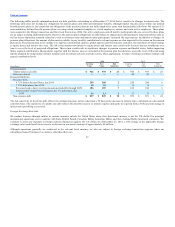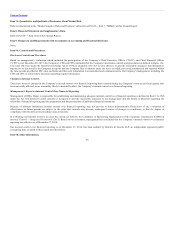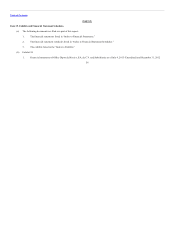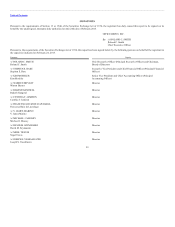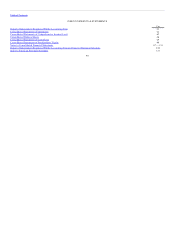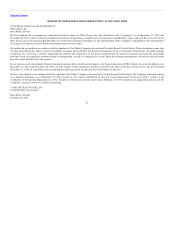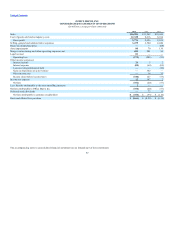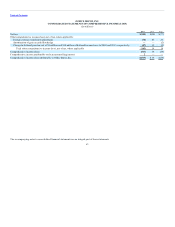OfficeMax 2014 Annual Report Download - page 55
Download and view the complete annual report
Please find page 55 of the 2014 OfficeMax annual report below. You can navigate through the pages in the report by either clicking on the pages listed below, or by using the keyword search tool below to find specific information within the annual report.
Table of Contents
functional currency. This exposure arises primarily from inventory purchases denominated in a foreign currency. At December 27, 2014, there are foreign
exchange forward contracts with an aggregate notional amount of $5 million hedging inventory exposures. The highest notional amount outstanding at any
point during 2014 was $32 million during the month of May. Also, from time-to-time, we enter into foreign exchange forward transactions to protect against
possible changes in exchange rates related to scheduled or anticipated cash movements among our operating entities. At December 27, 2014, foreign
exchange forward contracts with an aggregate notional amount of $25 million were in place to hedge these movements.
Generally, we evaluate the performance of our international businesses by focusing on the results of the business in local currency, and not with regard to the
translation into U.S. dollars, as the latter is impacted by external factors.
Commodities Risk
We operate a large network of stores and delivery centers around the world. As such, we purchase fuel needed to transport products to our stores and
customers as well as pay shipping costs to import products from overseas. We are exposed to potential changes in the underlying commodity costs associated
with this transport activity. We enter into economic hedge transactions for a portion of our anticipated fuel consumption in the U.S. These arrangements are
marked to market at each reporting period. Some of these arrangements may not be designated as hedges for accounting purposes and changes in value are
recognized in current earnings through the Cost of goods sold and occupancy costs line on the Consolidated Statements of Operations. Those that are
designated as hedges for accounting purposes are also marked to market at each reporting period, with the change in value deferred in accumulated other
comprehensive income until the related fuel is consumed. At December 27, 2014, we had entered into contracts for approximately 15 million gallons of fuel
that will be settled monthly through January 2016. Currently, these economic hedging transactions are not considered material. As of December 27, 2014,
excluding the impact of any hedge transaction, a 10% change in domestic commodity costs would result in an increase or decrease in our operating profit of
approximately $7 million.
Although we cannot determine the precise effects of inflation on our business, we do not believe inflation has had a material impact on our sales or the results
of our operations. We consider our business to be somewhat seasonal, with sales generally trending lower in the second quarter, following the “back-to-
business” sales cycle in the first quarter and preceding the “back-to-school” sales cycle in the third quarter and the holiday sales cycle in the fourth quarter.
Certain working capital components may build and recede during the year reflecting established selling cycles. Business cycles can and have impacted our
operations and financial position when compared to other periods.
During 2014, the Company early adopted the new accounting standard related to accounting for discontinued operations. There was no significant impact to
the Consolidated Financial Statements. Additionally, during 2014, the Financial Accounting Standards Board (“FASB”) issued a new accounting standard
relating to revenue recognition. That standard will be effective in 2017, with retrospective application possible. The Company has not finalized assessing the
impact this standard will have on the Consolidated Financial Statements. Refer to Note 1, “Summary of Significant Accounting Policies,” of the
Consolidated Financial Statements for further discussion of these new accounting standards.
In addition, the FASB has issued proposed rules relating to leasing transactions that, if passed in their current form, would have a significant impact on our
financial statements. Among other things, the proposed standard would create a right of use asset and corresponding liability on the balance sheet measured
at the present value of lease payments. Depending on the nature of the asset being leased, the income statement impact would either be similar to current
operating lease treatment or current capital lease treatment. The Company continues to monitor developments relating to this project.
53


